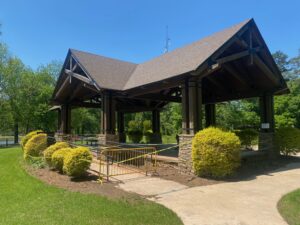Peachtree City may be relaxing its tree ordinance somewhat in an effort to free up code enforcement officers while also leaving a process in place to protect larger and specimen trees.
In a presentation last week to the City Council, Planning and Zoning Administrator David Rast noted that under the new regulations, residents would be able to remove trees up to six inches in diameter without a permit, as long as they are not in a protected stream, wetland or watershed buffer, or a conservation easement, for example.
Currently, residents must get a tree removal permit for any tree above three inches in diameter.
The easiest way to tell if a tree is in a buffer on your lot is to visit city hall and get a copy of your plat, Rast said.
The new ordinance, if approved, would also allow residents to avoid the tree removal permit process if:
• The trees are in a hazardous or dangerous condition requiring immediate removal because of a danger to public health, welfare and safety;
• The trees were damaged in a severe weather event; or
• The trees are found to be diseased or insect infested by the county extension service, the state forestry commission, an arborist or an urban forester.
There will be no fee for the new tree removal permit, but the city will no longer be visiting each site for compliance, instead doing spot checks as necessary.
Rast said he is hoping to decrease the amount of staff time policing tree permits by 75 to 80 percent.
“It’s very time consuming and we are trying to alleviate their workload and free them up to do some other work,” Rast said.
Rast noted that citizens will have more responsibility when they file for a tree removal permit, providing photo documentation of each tree being removed, general photos of the property, and a certification that all trees to be removed are on the applicant’s property.
Also the city will require authorization from the homeowners’ association or community association if applicable, Rast noted.
The upshot is that citizens will be able to file their permit application online if they choose, which will help expedite the process, Rast said.
Rast presented the recommended changes in the form of “frequently asked questions” as staff wants to make the requirements easy to understand, which isn’t always the case when they are in ordinance form. The information in the FAQ will be used to write the ordinance, Rast noted.










Leave a Comment
You must be logged in to post a comment.